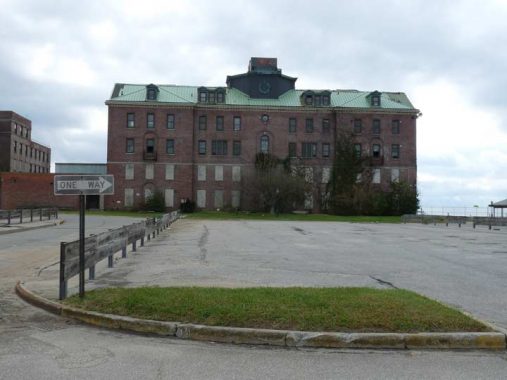Though Riis Park and its boardwalk and beach is quite busy indeed with sunseekers for a relatively short time, May through September, it can be forbidding indeed during the other months, when wind sweeps in off the ocean and makes the temperature even colder than the thermometer says.
The Rockaway Peninsula was separated from the rest of Long Island eons ago by beach erosion and other factors, and its isolation has always made it a wild card as far as urban exploration goes. You can take the bus across the Gil Hodges Marine Parkway Bridge to attain the park, or take a bus or a lengthy walk west from the Rockaway Park A train terminal on Beach 116th Street. Here you will find the former military installation Fort Tilden, now part of Gateway National Park. If you travel west along Rockaway Point Boulevard, you encounter communities like Roxbury and Breezy point. I have yet to beach the Breezy Point or Roxbury barriers, but FNY correspondent Sergey Kadinsky did a few years ago, and it remains one of the most commented-upon FNY pages I’ve ever posted, along with my Pleasant Avenue and 86th Street pages. Me, I’m mystified.
You’ll also find what must be one of the largest parking lots in the United States, if not the world, rivaled in NYC only by the one at Orchard Beach. They weren’t kidding when the said Robert Moses was all-in on the automobile. They said he kept the overpasses low on the approaches to Jones Beach because, in his opinion, buses brought in the riffraff and he wanted only a certain class to patronize his parks. At Riis Park, named for a photojournalist who described how “the other half lived,” no subways or commuter rails were extended, though a pair of bus lines serve it.
Just to the west of the beach and boardwalk, a battered hulk of a former rest home rises out of the sand. this was once the Neponsit Health Center, constructed in 1918 as a tuberculosis hospital for young patients, built in an era before there was a direct treatment and the best they could do was allow patients to access sun and fresh air. It was Riis himself who campaigned for it.
Eventually the building was used to host people on the other end of the life cycle, Alzheimer’s disease patients. When a tropical storm in September 1998 battered the peninsula, the patients were hastily bussed out of the facility and scattered to other hospitals on Long Island, before their families could be notified. The building was abandoned, but never razed. It seems there is a covenant in the original deed stating it can only be used either for medical or recreational purposes.
It will probably remain in place for quite a while yet.
Please help contribute to a new Forgotten NY website
Check out the ForgottenBook, take a look at the gift shop, and as always, “comment…as you see fit.”
12/7/18
